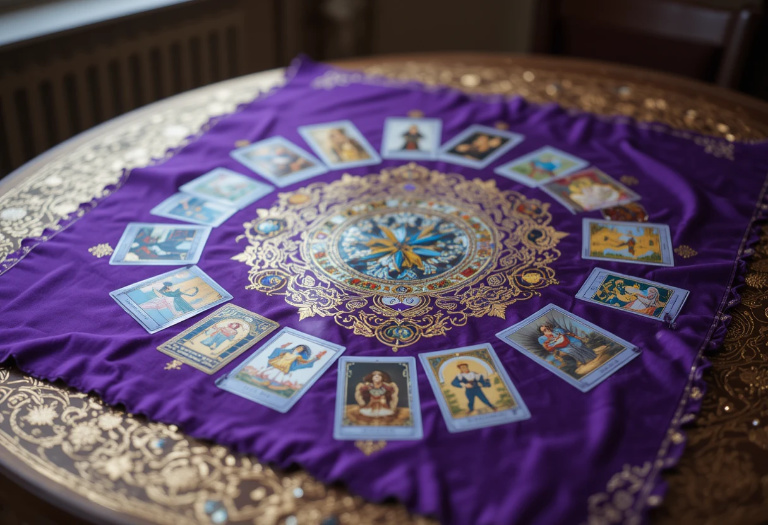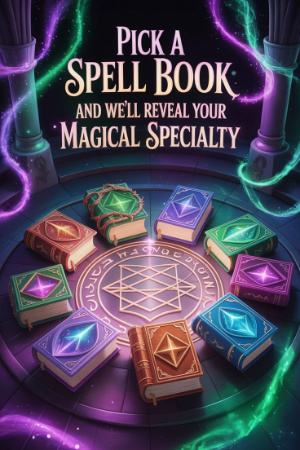
Tarot isn’t just about memorizing meanings—it’s about stepping into a conversation with something bigger than yourself. The cards are doorways, mirrors, and messengers, and learning to read them is as much about trusting your intuition as it is about studying. Whether you’re brand new to tarot or have been flipping cards for years, there’s always something deeper to discover.
Every deck has its own voice, and every reader has their own style. Some readers lean heavy on intuition, while others dive into symbolism, history, or numerology. There’s no single “right way” to read tarot, but there are practices and habits that can make the experience richer, clearer, and more magical.
Sometimes, the smallest tip can unlock a whole new layer of insight. Maybe it’s the way you shuffle, the questions you ask, or the way you record your spreads. These little adjustments can transform your readings from something confusing into something deeply powerful and personal.
In this guide, we’ll explore 30 tarot reading tips that can help you connect more fully with your deck, your intuition, and the messages waiting to be revealed. Take what feels right for you, leave the rest, and let the cards speak in the way they were meant to.
30 Tarot Reading Tips

1. Start with Simple Spreads
When you’re first learning, keep things simple. A three-card spread—past, present, future—can reveal more than you might expect. Small spreads give you space to really focus on the meaning of each card without feeling overwhelmed.
Over time, you’ll notice that even simple spreads can hold layers of wisdom. A single card can tell a whole story if you give it room to breathe. Once you’re comfortable with smaller readings, you’ll naturally feel ready to experiment with larger ones.
Remember: it’s not about how many cards are on the table, but how deeply you connect with the ones that are.
2. Cleanse Your Deck Regularly
Tarot cards soak up energy like sponges. If you’ve been reading for yourself during a tough time, or for others who carry heavy emotions, your deck can start to feel weighed down. Cleansing resets that energy so the cards can speak clearly again.
You can do this in many ways: passing the deck through incense smoke, leaving it under the moonlight, or simply knocking on the deck to release stagnant energy. Some readers even sleep with their cards under their pillow to bond and refresh the connection.
Think of it like refreshing the air in a room—it clears away the clutter so new messages can flow freely.
3. Keep a Tarot Journal
One of the best ways to grow as a reader is to keep track of your readings. Write down the spreads, the cards that came up, your first impressions, and how events unfolded afterward. Over time, you’ll start to notice patterns you never would’ve seen otherwise.
Your journal doesn’t need to be fancy—scribbled notes on scraps of paper are just as powerful as an ornate leather-bound book. What matters is capturing the moment and reflecting on it later.
Looking back at your journal can also show how much your intuition has grown, and how the cards speak uniquely to you.
4. Shuffle with Intention
Shuffling isn’t just a way to mix up the cards—it’s part of the ritual. As you shuffle, focus on the question or the energy you want the reading to address. Imagine that intention flowing into the deck.
Everyone has their own style of shuffling: overhand, riffle, or simply mixing the cards on the table. There’s no wrong way, as long as it feels natural to you. The key is the mindset behind the movement.
By treating shuffling as a sacred pause, you set the stage for the reading before the first card is even drawn.
5. Ask Clear, Open-Ended Questions
The way you phrase your question can make or break a reading. Instead of asking “Will I get this job?” try “What energy surrounds this job opportunity?” or “What can I do to improve my chances?”
Tarot doesn’t do well with yes/no questions—it prefers to show possibilities, challenges, and advice. Open-ended questions invite the cards to share a fuller picture of what’s going on.
This simple shift can turn vague readings into ones that feel alive, relevant, and genuinely helpful.
6. Learn the Story of Each Suit
The four suits—Cups, Wands, Swords, and Pentacles—tell stories about different parts of life. Cups often deal with emotions, Wands with passion and drive, Swords with the mind, and Pentacles with the physical world. Knowing this makes readings much smoother.
When you see a spread heavy in one suit, you can immediately sense where the energy is concentrated. For example, a spread full of Cups suggests emotions and relationships are at the heart of the situation.
Understanding the broader theme of each suit helps you connect the dots between cards without having to memorize every detail.
7. Trust Your First Impressions
When a card flips over, pay attention to your very first thought, image, or feeling. That initial reaction often carries the clearest message. Overthinking can dilute what your intuition is trying to say.
Even if your first impression doesn’t line up with the textbook meaning, trust it. The cards speak to each reader differently, and your perspective is valid.
Over time, you’ll find that these flashes of insight are often the most accurate and powerful parts of the reading.
8. Create a Sacred Space
The environment you read in shapes the energy of the reading. Lighting a candle, burning incense, or simply sitting in a quiet spot can make the experience feel more grounded and magical.
A sacred space doesn’t have to be elaborate. It can be as simple as clearing off your table, playing soft music, or laying down a cloth for your cards. The point is to signal to your mind and spirit that you’re stepping into a different kind of space.
This atmosphere helps you tune in more deeply to the messages of the cards.
9. Read for Yourself with Compassion
When you’re reading your own cards, it’s easy to get tangled in worry or project your fears into the spread. Remind yourself to approach your readings with kindness. The cards aren’t here to punish you—they’re here to guide.
If a difficult card shows up, don’t panic. Ask, “What lesson does this card want me to see?” or “How can I work with this energy?” This reframing keeps you open to receiving the message instead of shutting down.
Compassion for yourself makes your readings feel supportive instead of stressful.
10. Practice Regularly
Like any skill, tarot grows stronger with practice. Even pulling a single card each day can sharpen your intuition and deepen your understanding of the deck.
The more often you read, the easier it becomes to recognize patterns, symbols, and recurring messages. You’ll also get more comfortable trusting what comes up, even when it surprises you.
Consistency builds confidence, and confidence makes your readings flow more naturally.
11. Don’t Fear the “Scary” Cards
Cards like Death, The Tower, or the Devil often make beginners nervous. But these aren’t cards of doom—they’re cards of transformation, truth, and growth. The Death card, for example, is often about endings that make way for new beginnings, not literal death.
When these cards show up, pause and breathe. Ask yourself what cycle is closing, what illusion is breaking, or what shadow is asking to be faced. Often, the “scary” cards are the ones that push you to real breakthroughs.
Over time, you’ll see that these cards carry some of the most empowering and healing messages in the entire deck.
12. Pay Attention to Reversed Cards
Reversals can feel tricky at first, but they add depth to readings. A reversed card doesn’t always mean “bad”—it can mean blocked energy, an internal process, or a softer version of the upright meaning.
If reversals overwhelm you, start by reading them as simply “the energy is here, but something is getting in the way.” As you get more comfortable, you’ll find your own unique way of interpreting them.
Think of reversals as whispers instead of shouts. They’re still important, but they often point to subtle inner dynamics that might not be obvious on the surface.
13. Notice Patterns in the Spread
It’s easy to focus on cards one by one, but sometimes the magic is in the big picture. Notice if certain numbers repeat (like lots of sevens), or if a spread leans heavily toward one suit or Major Arcana.
Patterns often reveal the theme of the reading more clearly than individual cards. For instance, three court cards may suggest multiple people are involved in the situation. A spread with mostly Majors means powerful, life-shifting energy is at play.
Seeing the forest as well as the trees helps you understand not just the details, but the overall story.
14. Use Your Senses
Tarot isn’t only about what you see on the card—it’s about what you feel. When a card appears, notice any sensations: a heaviness in your chest, a sudden memory, or even a color that stands out. These sensory impressions are part of the reading.
Some readers even “hear” messages or get a smell or taste when certain cards show up. There’s no wrong way for intuition to speak.
By paying attention to these subtle cues, you’ll unlock layers of meaning that no book could ever teach.
15. Connect with the Major Arcana First
The 22 Major Arcana cards represent big life lessons and soul themes. Learning their meanings first gives you a strong foundation, since they often set the tone for any reading.
Cards like The Fool, The Lovers, and The World carry archetypal energy that shows up in myths, stories, and our own lives. Understanding these cards helps you see the larger journey of the tarot.
Once you feel grounded with the Majors, the Minors (suits) start to feel like more detailed chapters of the story.
16. Don’t Depend Too Much on the Guidebook
It’s tempting to cling to the little booklet that comes with your deck, but relying too heavily on it can block your intuition. Guidebooks are a starting point, not the final word.
Try reading a card without looking it up first. Write down your impressions, then check the guidebook afterward. Notice where your intuition lined up—and where it added something unique.
This way, you’re not memorizing meanings, you’re building a relationship with the cards themselves.
17. Try Reading for Others
Reading for yourself is wonderful, but reading for others teaches you a whole new level of skill. When you read for someone else, you learn how to trust your words, even when they don’t immediately make sense to you.
Often, what feels vague to you lands perfectly for the other person. That’s when you realize that tarot is a dialogue between your intuition and their energy.
Start small—read for friends who are open-minded, and pay attention to how they respond. You’ll build confidence quickly this way.
18. Respect Boundaries in Readings
Tarot is powerful, but it should never be invasive. Avoid asking about things that pry too deeply into someone else’s private life without permission. For example, instead of asking, “Is my friend cheating on their partner?” you could ask, “What do I need to know about my friendship right now?”
Respecting boundaries keeps your practice ethical and builds trust. The cards respond better when used with care and integrity.
Remember: tarot is meant to guide and empower, not to control or spy.
19. Meditate with a Card
Sometimes, the best way to understand a card is to spend time with it outside of a reading. Pick a card, sit quietly with it, and imagine stepping into the scene. What does it feel like to be there? Who are the characters, and what might they say to you?
This practice deepens your personal connection to the imagery and symbols. You might discover meanings that never appear in books.
It also strengthens your intuition, since you’re letting the card speak directly to you.
20. Don’t Rush the Reading
Tarot isn’t something to speed through. Give yourself time to shuffle, to lay the cards, and to sit with them. Sometimes the best insights come after a moment of silence.
If a card feels confusing, let it linger. You don’t have to force an answer immediately. The meaning often unfolds naturally as you reflect on it.
The slower you go, the more room there is for magic to rise to the surface.
21. Notice the Artwork in Your Deck
Every deck has its own style and symbols. Even if you know the “standard” meaning of a card, pay attention to what the art in your deck is showing you. Sometimes a tiny detail—a bird in the background, the direction a figure is facing—can completely shift the message.
Your deck might emphasize certain themes more strongly than others. For example, some decks make The Lovers about passion, while others highlight choice or balance. Trust that the artwork is part of the conversation.
The more closely you look, the more your deck will reveal its unique voice.
22. Don’t Read When You’re Drained
Tarot asks for energy and focus. If you’re exhausted, upset, or distracted, your readings may feel cloudy. It’s okay to step back and wait until you’re in a calmer state.
When you take care of yourself first, you’ll approach the cards with clearer intuition. Even pulling one quick card can feel more accurate when your energy is grounded.
Think of it like trying to listen to a whisper—you’ll hear it better in silence than in noise.
23. Learn Tarot Numbers
Numbers in tarot carry meaning just like the suits. Aces represent beginnings, twos balance, threes growth, and so on up to tens, which show completion. Knowing the flow of numbers makes it easier to interpret any card in the minors.
For example, the Five of Swords and the Five of Cups may look very different, but both reflect conflict or challenge, since fives carry that energy.
Once you understand the number system, the deck becomes easier to read without memorizing every card.
24. Pull a Daily Card
A simple way to bond with your deck is to pull one card each morning and reflect on it throughout the day. Ask, “What energy should I be aware of today?” and see how the card shows up in real life.
By evening, you can journal about how the card’s message played out. Over time, you’ll be amazed by how accurately the cards mirror your daily experiences.
This builds trust in your intuition and strengthens your relationship with the deck.
25. Embrace Symbolism
The images on tarot cards are packed with symbols—colors, animals, objects, even the expressions of the characters. These are all clues. A white flower might symbolize purity, while a stormy sky could point to inner conflict.
Don’t feel pressured to know the “official” meaning of every symbol. Notice what it means to you. If a black cat makes you think of mystery or luck, then that’s the message the card is offering.
Tarot is a symbolic language, and your personal associations are part of the translation.
26. Allow Silence in Readings
Sometimes the best thing you can do is pause. If a card feels confusing, sit with it in silence. Notice what thoughts or feelings arise as you give yourself space.
Silence invites deeper intuition. Often, the longer you hold a card in quiet reflection, the more its meaning starts to unfold naturally.
Don’t be afraid of blank moments—they’re often where the strongest messages come through.
27. Don’t Worry About Being “Perfect”
Tarot isn’t about getting everything 100% “right.” It’s about opening yourself to messages and trusting your own process. Even experienced readers misinterpret cards sometimes.
What matters most is sincerity and openness. The cards respond to your willingness to listen, not to perfection.
Remember: tarot is a journey. Every “mistake” is actually just part of your learning and growth.
28. Use Tarot for Self-Reflection
Not every reading has to predict the future. Sometimes the most powerful readings are the ones that show you what’s happening inside yourself right now.
Ask the cards, “What do I need to see about myself today?” or “What part of my energy needs love and attention?” The answers can be gentle, supportive, and eye-opening.
Tarot isn’t just about external events—it’s also a mirror for your inner world.
29. Let the Cards Tell a Story
Instead of seeing the cards as separate, imagine them as scenes in a story. How does the first card lead into the next? What journey are they showing together?
For example, pulling The Fool, the Two of Wands, and the Six of Swords might tell the story of a leap of faith, a choice, and a journey toward calmer waters.
This storytelling approach makes readings more fluid, memorable, and meaningful.
30. End Each Reading with Gratitude
Whether you read for yourself or someone else, close the reading by thanking the cards (or the universe, spirit, or your intuition—whatever feels right). Gratitude seals the energy of the reading and honors the guidance you’ve received.
This can be as simple as saying, “Thank you for the message.” Some readers like to touch the deck to their heart before putting it away.
Ending with gratitude builds a respectful, ongoing relationship with your cards.
Closing the Cards
Tarot isn’t about control—it’s about connection. Every shuffle, every card, and every spread is a doorway into deeper understanding. These tips are here to help you navigate that doorway with more confidence, compassion, and a sense of magic.
The more you practice, the more you’ll find that tarot grows with you. Let these 30 tips be stepping stones, but remember—the real magic is in your unique way of reading. Trust yourself, honor the process, and let the cards keep unfolding their mysteries in your life.




